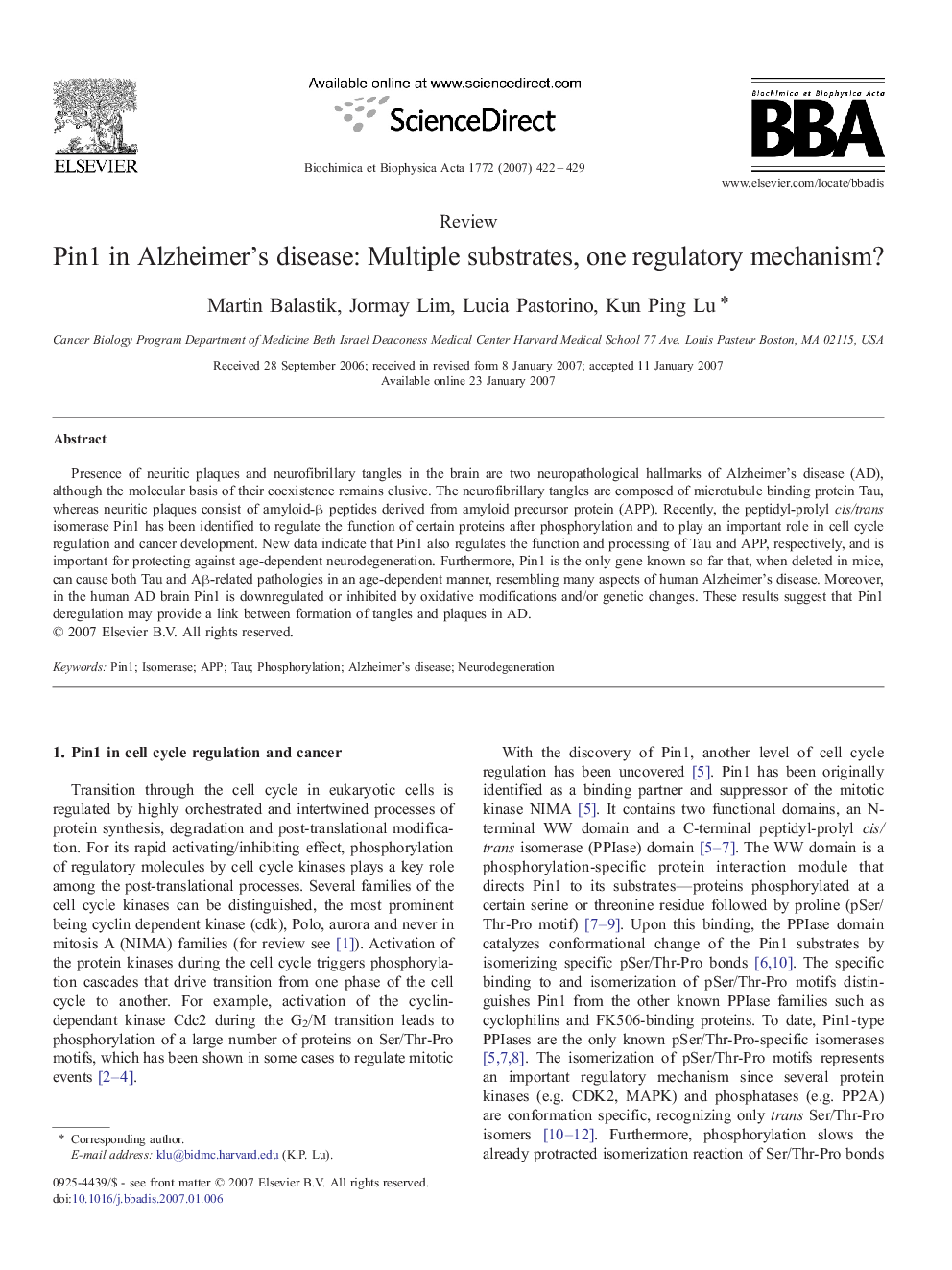| کد مقاله | کد نشریه | سال انتشار | مقاله انگلیسی | نسخه تمام متن |
|---|---|---|---|---|
| 1905819 | 1534742 | 2007 | 8 صفحه PDF | دانلود رایگان |

Presence of neuritic plaques and neurofibrillary tangles in the brain are two neuropathological hallmarks of Alzheimer's disease (AD), although the molecular basis of their coexistence remains elusive. The neurofibrillary tangles are composed of microtubule binding protein Tau, whereas neuritic plaques consist of amyloid-β peptides derived from amyloid precursor protein (APP). Recently, the peptidyl-prolyl cis/trans isomerase Pin1 has been identified to regulate the function of certain proteins after phosphorylation and to play an important role in cell cycle regulation and cancer development. New data indicate that Pin1 also regulates the function and processing of Tau and APP, respectively, and is important for protecting against age-dependent neurodegeneration. Furthermore, Pin1 is the only gene known so far that, when deleted in mice, can cause both Tau and Aβ-related pathologies in an age-dependent manner, resembling many aspects of human Alzheimer's disease. Moreover, in the human AD brain Pin1 is downregulated or inhibited by oxidative modifications and/or genetic changes. These results suggest that Pin1 deregulation may provide a link between formation of tangles and plaques in AD.
Journal: Biochimica et Biophysica Acta (BBA) - Molecular Basis of Disease - Volume 1772, Issue 4, April 2007, Pages 422–429